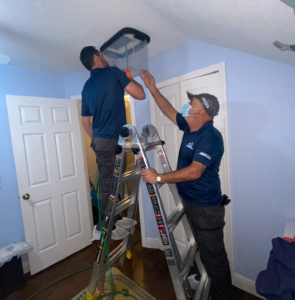Real estate is a valuable asset that can provide both income and appreciation. It is a major component of investment portfolios and plays an important role in the economy.
Real estate is a type of property that includes land and anything permanently attached to it, such as houses, office buildings, warehouses, strip centers and more. This article will explore the basics of real estate, including definitions, types and effective investment strategies. Click the https://cathyjackson.com/ to learn more

Real estate is land and anything permanently attached to it, such as buildings or trees. It also includes rights that “run with the land,” such as air rights above it and underground rights below. These include the right to possess, control, and enjoy it as a private owner or to transfer ownership to others. Real property is different from personal property, which refers to movable objects that are not attached to land.
There are several different kinds of real estate, including residential, commercial, and industrial. Each type of real estate has its own unique characteristics that can impact its value and demand. Real estate is often seen as an attractive investment option because it can yield steady income and appreciate over time. However, it is important to understand the definition of real estate before investing in it.
Real property encompasses both the physical land and any structures affixed to it, such as homes or driveways. It also includes the rights associated with land ownership, such as the ability to use and sell it. Land without permanent structures is considered unimproved, while land with buildings or other improvements on it is considered improved. Real estate is distinct from personal property, which refers to a person’s movable possessions, such as furniture or vehicles.
Depending on how the real estate is used, it may be categorized as either residential or commercial. Residential real estate is intended for human habitation, while commercial real estate is meant for businesses and other entities. In addition, real estate can be owned by a government or a corporation.
A real estate investor is an individual who buys or leases real estate for the purpose of generating income and appreciating its value over time. They must also manage the property, which can be a time-consuming and demanding task.
The real estate industry is a vital part of the economy, and it plays a role in job creation, economic growth, and housing demand. It is also a significant source of investments for many individuals and organizations. Understanding the definition of real estate and its various types is essential for making sound decisions about investment opportunities.
Types
Real estate is an asset class that plays a significant role in the economy. It helps fuel ancillary industries, creates jobs, and contributes to the overall social fabric of a city or region. Its growth also drives economic stability and provides a steady source of income for individuals through rent and property taxes. Understanding the different types of real estate can help you make informed investments and decisions. The main types of real estate include residential, commercial, and raw land.
The term residential real estate encompasses properties used primarily for housing purposes, such as single-family homes, apartments, condos, and co-ops. This type of real estate includes both owner-occupied and leased properties. The market considerations for this sector are based on demand drivers, demographic trends, and location factors.
In contrast, the term commercial real estate encompasses properties used primarily to conduct business activities and generate income. Common commercial properties include office buildings, strip malls, and apartment buildings that are rented out to businesses. This category of real estate also includes retail buildings that are occupied by retailers who sell products and services to consumers.
Another category of commercial property is industrial, which comprises buildings or plots that are primarily used for manufacturing and production activities. This type of real estate includes warehouses, factories, and distribution centers. This category of real estate also includes research and development buildings that are used to create new products or improve existing ones.
As the world becomes increasingly digital, more companies are using flex space to accommodate employees who work from home. This type of real estate is becoming more popular as it offers companies flexibility and reduced operating costs.
The final category of real estate is land, which encompasses vacant or undeveloped plots of land. Raw land can be privately owned or public, and it may contain structures like houses or industrial complexes. Unlike personal property, which is defined as movable items that are not permanently attached to the land, real property is considered to be an immovable asset with permanent ownership rights. This allows owners to build whatever they want on the property, and they can use it for any purpose as long as they follow local zoning laws.
Taxes
Real estate taxes, which are levied on land and any buildings that are constructed or attached to it, are the main source of income for most local governments. They are generally based on market value and can vary widely between municipalities. Real estate tax rates are typically capped at either 2% or the rate of inflation, which limits annual increases in property taxes. However, these caps can be loosened by a majority vote of a district’s voters or board members.
Property taxes vary widely between countries, and the amount paid can also depend on the type of real estate and its location. For example, a rural city in Oklahoma will probably have much lower property taxes than a popular big city on one of the coasts or in a major metropolitan area. The tax rates are also affected by how much the local government needs for services and by the amount of competition between cities for real estate investments.
Some municipalities have additional taxes on real estate, such as a land value tax (LVT), which is usually a percentage of the land’s assessed market value. Other taxes may include a real estate transfer tax, which is a tax on the sale of a property, and a value-added tax, which is a sales tax that is levied on new construction or significant renovations.
In New York, there is an additional flip tax that applies to co-ops, which is designed to discourage frequent property flipping and its negative effects on a building’s culture or demographics. This tax can be a percentage of the sale price, a flat fee per co-op share owned or a combination of these.
In general, the value of a property is determined by its market value, which is based on a number of factors such as recent sales prices of comparable properties, and appraisals performed by qualified assessors. Occasionally, changes in the economy or interest rates can cause market prices to fall and therefore decrease the value of a property. When this occurs, local governments increase the tax rates to meet their revenue requirements.
Investments
Real estate investments offer a number of benefits, including passive income, tax advantages and diversification. They can also provide a steady stream of cash flow and long-term capital appreciation. However, they can be a risky investment if investors are not properly informed and prepared for the challenges of owning property.
Getting started in real estate investing requires defining your goals and risk tolerance. Consider whether you want short-term gains from flipping properties or long-term wealth accumulation through rental income. This will help narrow your search for opportunities and focus on those that align with your needs.
Investors should also familiarize themselves with local laws, regulations and potential risks associated with the type of property they are considering. This includes understanding zoning requirements, tax laws, and landlord-tenant regulations. It is also important to do thorough due diligence and secure insurance against unforeseen issues.
Another factor to consider is the location of the property. Local factors like employment rates, crime statistics and upcoming urban development projects can have significant effects on the value of a property. It is also important to do due diligence and evaluate neighborhoods for their amenities, safety, and accessibility.
Finally, investors should assess their financial situation and determine how much they can afford to invest. It is often a good idea to spread out their investments across different markets and property types to mitigate against market fluctuations and economic downturns. It is also helpful to invest in emerging markets, as they tend to have lower entry thresholds and offer better growth potential.
Investors should also consider the time and effort that will be required to manage a property. Active management can be expensive, and the resale value of a property may suffer if it is not maintained correctly. It is also important to set aside enough money for maintenance, repairs and other fees, such as insurance and property taxes. It is also a good idea to establish an emergency fund in case of unexpected expenses. Finally, investors should consider the amount of leverage they can afford to use, as this will affect their return on investment.








